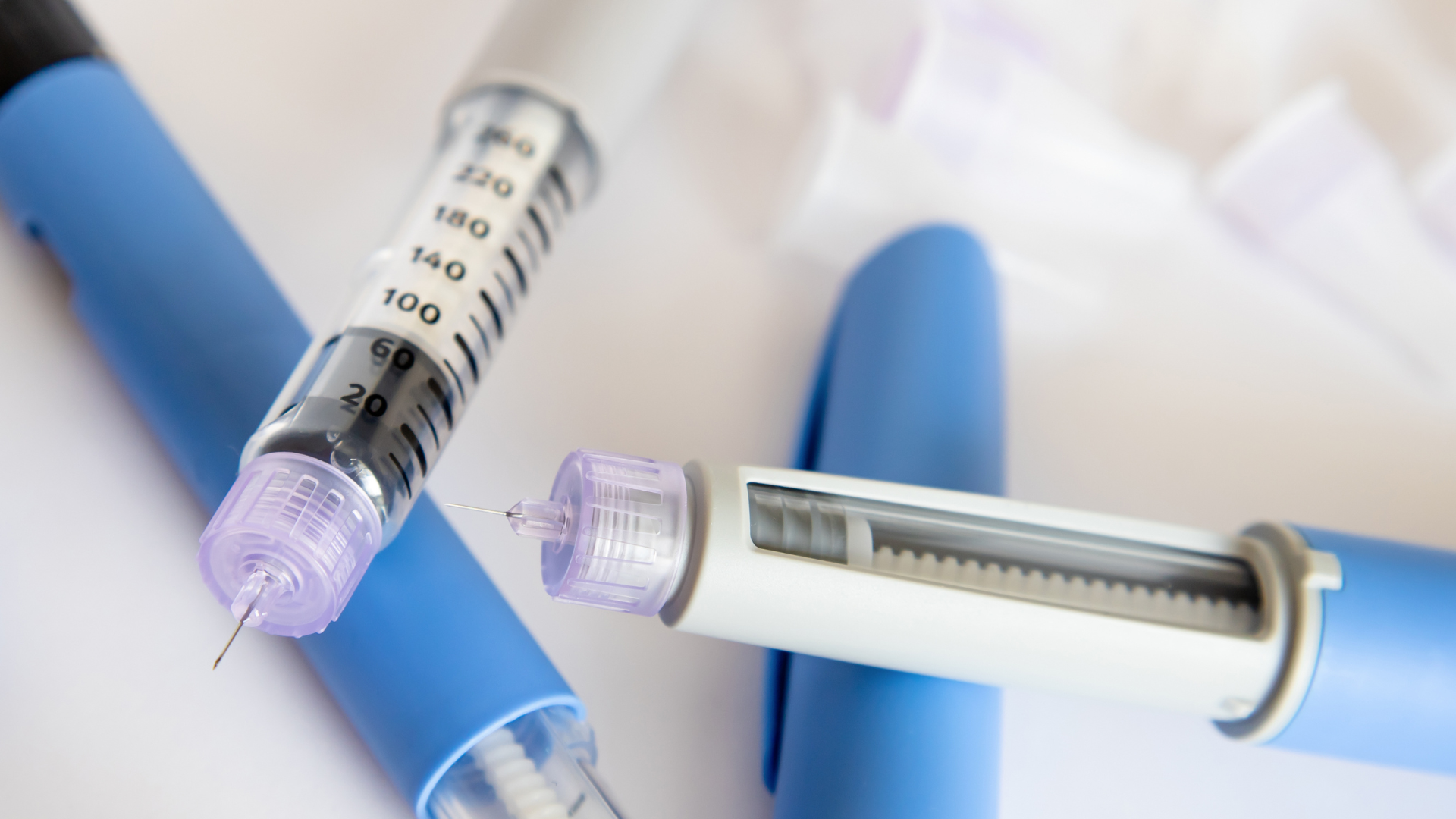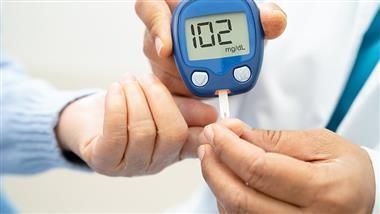Under Pressure: Flying With Diabetes

Key takeaways:
- For people wearing insulin pumps, takeoffs can cause small doses to over-deliver and landings can cause under-delivery.
- Sudden cabin decompression can cause large insulin doses to be delivered.
- To avoid accidental insulin doses, disconnect the pump just before takeoff and reconnect after 20 minutes. For pumps that can't be disconnected, a very small snack to avoid or correct a low is advised after takeoff.
Some people with diabetes who are traveling by air have noticed their pumps show small, unexpected doses of insulin during takeoffs. New research conducted using Europe’s largest hypobaric chamber shows insulin pumps can under- or over-deliver about half a unit on takeoff and landing.
The U.K.-based researchers from the Royal Surrey County Hospital and the University of Surrey said they were prompted to investigate after reports of insulin pump users experiencing hypoglycemia during and right after traveling on planes.
Research presented at the 2024 EASD conference, reported that pumps over-delivered 0.6 units of insulin during ascent when pressure in the cabin decreased. During descents, the pumps tested under-delivered 0.5 units.
The drop in cabin pressure as the plane ascends can cause bubbles to form in the cartridge, which may cause a small amount of insulin to be delivered, the researchers reported. Then, on descent, a small reduction in insulin delivery can occur, which could cause an increase in blood sugar.
The researchers noted that under-delivery during descent was less concerning than over-delivery during takeoff, which could cause low blood sugar, especially in those who are very sensitive to insulin, which includes many children.
Bruce King, professor of pediatric diabetes and endocrinology at the University of Newcastle, participated in the study. King, who is a is also a paraglider pilot, delivered a presentation Friday on the findings.
The researchers placed 26 pumps in the largest hypobaric chamber in Europe to simulate the effects of pressurization changes during a commercial flight. More dramatic was the effect of sudden cabin decompression on insulin pumps, which could occur during an emergency. In this scenario, the pumps over-delivered 5.6 units of extra insulin, which could be enough to cause severe hypoglycemia.
Sudden decompression in airplanes, caused by mechanical or human error can happen if a door fails, for example, and opens mid-flight. King said such events happen about 40-50 times a year, worldwide.
Anyone who's flown on a commercial airline is likely familiar with the advice from flight attendants to put on the oxygen masks that will fall from the plane’s ceiling in such an event. Now, in the event of such an emergency for people using insulin pumps, correcting with fast-acting carbs to cover the nearly 6 units of unintended insulin that could be delivered would be advisable.
To avoid accidental insulin doses and low blood sugar, King recommended disconnecting the pump just before takeoff and reconnecting 20 minutes after when cruising altitude is reached. Once cruising altitude is reached, remove the cartridge and remove any bubbles manually or prime the pump.
For pumps that can't be disconnected, like the Omnipod, King suggested eating a very small snack, like a banana, if needed. On landing, he suggested another small snack and bolusing for it to avoid a rise in blood sugar.
More tips for flying with diabetes
Outside of bringing extra supplies with you, here are a few more tips when traveling via airplane:
- When going through security, the full body scanner can negatively interact with your insulin pump and continuous glucose monitor (CGM). Models that cannot go through the full body scanner include Medtronic and Tandem pumps, and Dexcom and Medtronic CGMs. Check with the manufacturer of your technology before flying if you have any questions. If you cannot go through the full body scanner, you will need to opt-out and have a pat down.
- If you are traveling on a long-distance flight, check in with the flight attendant and let them know you have diabetes. Prior to the flight, you can also mention diabetes when entering any food restrictions for the in-flight meal options.
- Traveling can throw off normal routines, causing high stress due to new foods, higher or lower amounts of activity, and disrupted sleep.
- Airplanes can increase the risk of dehydration, so remember to stay hydrated when traveling. Bring an empty water bottle with you to fill at a refill station in the airport terminal.
- If checking a bag, make sure to keep your diabetes supplies in your carry-on, as baggage can sometimes be lost. You should always have at least three days' worth of supplies in an easily accessible location when traveling. However, if a situation does arise where you lose your supplies, don’t worry. Diabetes medications are generally available worldwide, but you may incur the costs of seeing a doctor for a prescription and purchasing supplies. Some medications (for example, NovoLog) have different names outside the U.S.
- If you are landing in a different time zone, update your meter, pump, and CGM settings so that the time is accurate on your devices. Your basal rates are often tied to the clock in your machine, so make sure those time settings are correct.
The bottom line
You can minimize diabetes-related stress from air travel by adding a few items to your pre-flight checklist. Insulin pumps and AID systems, for all their charms, need some attention in the security line (avoid full body scanners with some pumps), and during take-off and landing (watch for unexpected insulin over or under-delivery).
When you land, make sure your pump is on the same time zone as you are. Give yourself a little extra time to get through the airport screening, some water for the ride, and a little grace as your body adjusts. Bon voyage!
Healthy Bites















